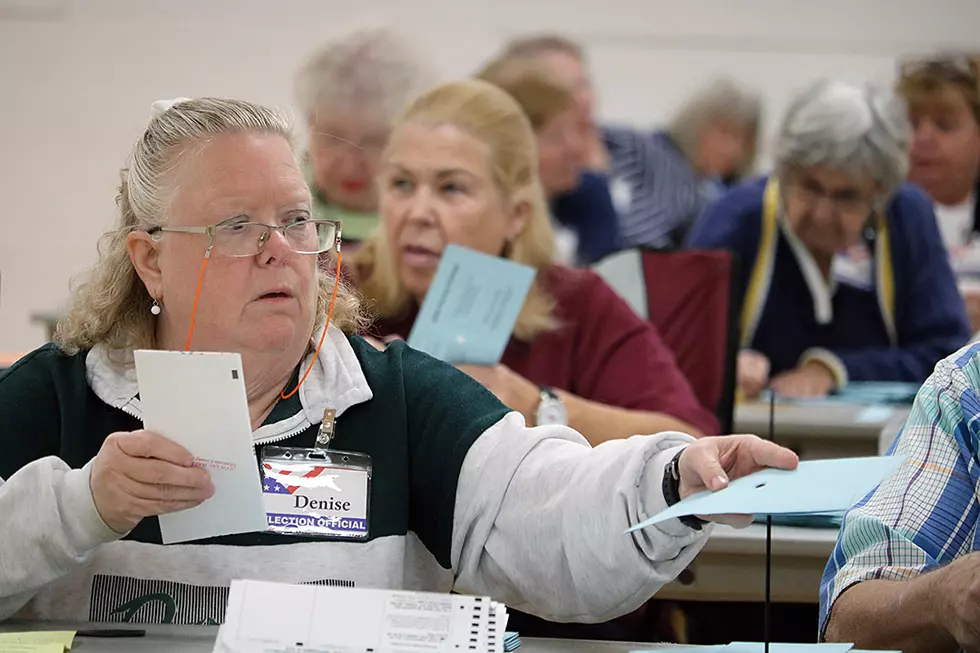
Finally settled: Missoula council approves new ward boundaries as city grows
Martin Kidston
(Missoula Current) Despite the persistent opposition of a few, the Missoula City Council on Monday night overwhelmingly adopted new ward boundaries after more than a month of public input, debate, and even a scolding from senior members.
The measure, which comes up every two years and never before with such complaining from a minority, passed on a 9-3 vote, and just in time for the spring filing season, which opens on April 20.
City officials have said the changes are necessary due to growth in certain parts of Missoula and a regulation that requires voting districts to stay in balance. Despite the suggestion from a handful of council members, the Missoula City Council - already the biggest in Montana - won't get any bigger, at least this year.
The three council members who opposed the ward changes on Monday night didn't like the adjustments to their district's boundaries and suggested there wasn't enough time to consider new maps. Those who supported it said elected officials should have no role in determining the boundaries to their own voting districts to avoid the appearance of self-interest.
Supporters also noted that changes have historically taken place every two years and are based on Census data, building permits and population change.
“It's really strange we're the ones actually approving our own wards. It invites gerrymandering,” said council member Amber Sherrill. “I'm sad to lose the people in my ward I'm losing, too. But it's the system we're dealt, and it makes me very hesitant to try and change it any direction.”
Others agreed, saying the process plays out reliably every two years and shouldn't come as a surprise to council members. Much of the city's growth is currently focused in areas with open land while other areas that are already developed have stayed relatively flat in population change.
As a result, ward boundaries must be adjusted to compensate. Some residents move into one ward, some move into another. Such adjustments have taken place every two years ahead of municipal elections, with the exception being 2013.
“Every other ward boundary adjustment that's been made so far has been based on building permits, and now we have the decennial Census to draw information on and explained,” said council member Heidi West. “The map suggested to us makes sense.”
But the socialist wing of City Council including Daniel Carlino and Kristen Jorden both opposed the changes, as did conservative Sandra Vasecka. Their reason's varied, though their opposition was united.
Jordan, who voiced outrage over the changes last Monday, was absent from the committee debate on Wednesday and appeared again on Monday to oppose the plan, suggested her ward has been “piecemealed out” to other wards.
She also suggested that her ward was not getting the investment it deserved.
“Ward Six is kind of tired of not getting the services it needs, and also being piecemealed out for various projects,” she said. “I want to work on this sooner, so we have more time to think creatively in the future.”
Carlino, who two weeks ago suggested the city add more City Council members and a new ward, also opposed the new map. This time he suggested the public didn't have a chance to weigh in.
The issue first appeared before City Council members on Feb. 8. Each meeting has offered opportunity for public comment. Carlino won his 2021 election by 153 votes in Ward 3.
“It's kind of a facade that there was a chance for public comment to be incorporated here,” said Carlino.
Council member Sandra Vasecka, who won her 2019 race by 12 votes, also opposed the new districts. But others called out Carlino's suggestion that the public had no chance to weigh in, that the process was a "facade," or that City Council didn't have adequate time for debate.
They also questioned the minority's desire to defend their voting districts.
“I do take a little pause on the fact that it was a 'facade' given this is the process we undertake on a lot of things, and we heard it in committee several weeks ago and it's something we do every two years,” said council member Stacie Anderson. “There was plenty of opportunity to apply feedback if feedback is necessary.”
Last week in fact, City Council President Gwen Jones offered something of a “scolding” to various members of council for their desire to define their own election boundaries while also waiting so long in the discussion to voice sudden opposition.
In initial hearings, few members of City Council expressed any concerns. It wasn't until last week's Monday night meeting, which is generally better attended, did they voice any concerns, outrage or opposition to the changes.
“We have some pretty narrow sideboards we're operating on,” said Jones, citing state law and municipal candidate filings. “It's a change, and everyone is experiencing some change based on the Census data. Two years from now, we'll be revisiting this.”
